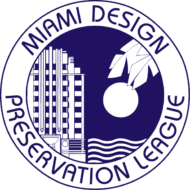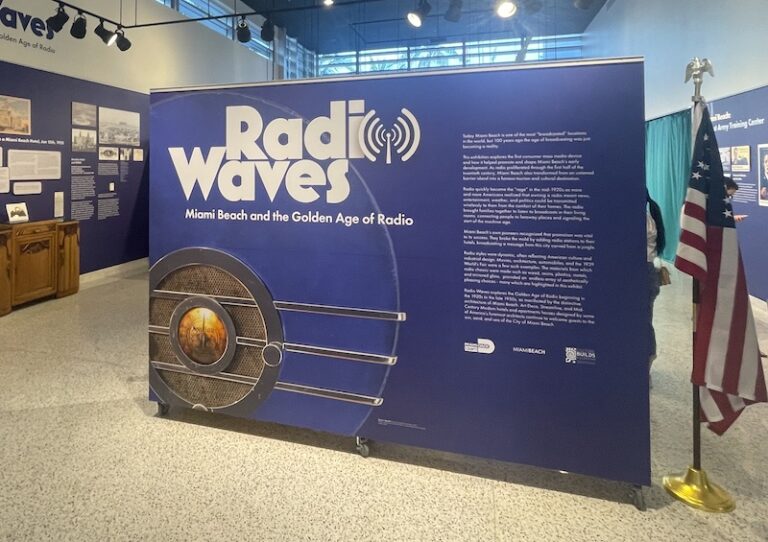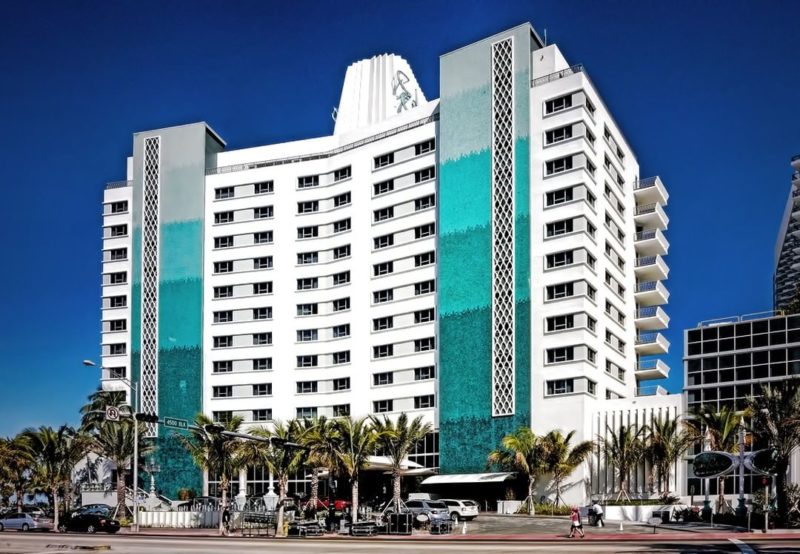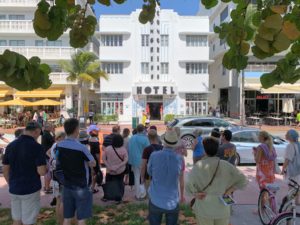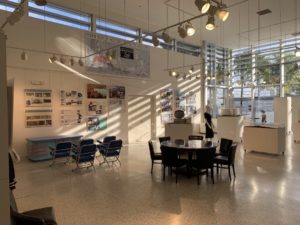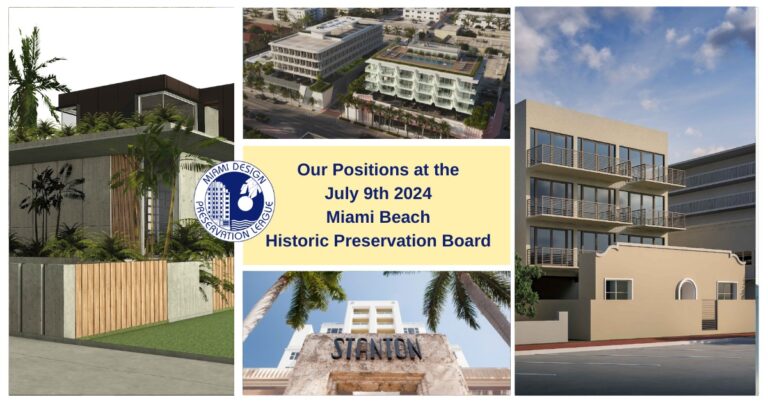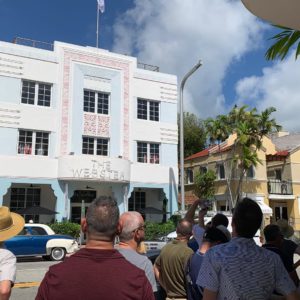
Revisiting his many drop-ins at Art Deco Weekend® and the return of his iconic band, now led by his grandson, C. Calloway Brooks.
In all the history of American popular music, there has been no performer quite as captivating as Cab Calloway. From his days at Harlem’s iconic Cotton Club to his stardom in Hollywood and finally, his status as one of Art Deco’s true American icons: Calloway’s vivid legacy lives on to this day.
He’s been called a pioneer not just in jazz but popular music, credited with helping pave the way for megastars like James Brown and Michael Jackson, and also as one of the godfathers of rap and hip-hop whose celebrity helped bridge many cultural and racial gaps of the era.
So, how did it all begin? And where does MDPL’s Art Deco Weekend fit into it?

Born Christmas Day, 1907, in Rochester, NY. Cabell “Cab” Calloway began performing at Chicago’s Sunset Cafe, where he mingled among greats like Louis Armstrong, who taught him how to scat.
From there, he found a home at Harlem’s quintessential jazz hotspot of the era, the Cotton Club. The club was known for allowing black artists to perform but not attend as patrons. In 1931, Cab Calloway and his Orchestra became one of the venue’s staple acts, taking over Duke Ellington’s spot while he was on tour.
That same year his signature song, “Minnie the Moocher” became the highest-charting song of 1931. Known for its call-and-response chant of hi-de-ho, it was later inducted into the Grammy Hall of Fame in 1999 and selected for preservation in the National Recording Registry in 2019 by the Library of Congress.
The success of “Minnie the Moocher” made Calloway not just a Cotton Club staple, but a bonafide Hollywood star. His appearances in pictures like Stormy Weather (1943), and Ebony Parade (1947) – along with lending his voice and likeness for cartoons like Betty Boop – further cemented his status as an American icon.
At the height of his orchestra’s run at the Cotton Club, he and his group also went on the road, playing statewide at segregated venues where tensions soon got too hot to handle.
The race riots inspired Calloway to use his earnings to transport himself and his band through chartered trains across the nation. He toured the Jim Crow South and was known for playing at Overtown sanctuaries like the Clover Club.
Art Deco and Jive
Culturally, Calloway was a trailblazer not just in music, but also in fashion, with his trademark zoot suits making a big splash among the counterculture.

“Zoot suit is the ultimate American civilian garment. Very deco in its prominent diagonal/circular geometry and cultural etymology,” says C. Calloway Brooks, the jazz legend’s grandson.
“I have a deep love for Art Deco’s zooty style of clean primitivist futurism, its neo-tribal, multi-cultural geometric fundamentalism, celebrating afresh the energy of the diagonal and the circle, of color, ombre, and gleam. The complex interaction of simple elements – so characteristic of Deco style – is also fundamental to my grandfather’s artistic vision,” he says.
The iconoclastic suits were the peak of modernity, borrowing from trends across the globe, like sharp British stadium shoes, Cuban parachute pants, and Egyptian cotton shirts. The look was also often paired with European accessories, like a German pocket watch, Italian knitted socks, and a Chinese silk tie.
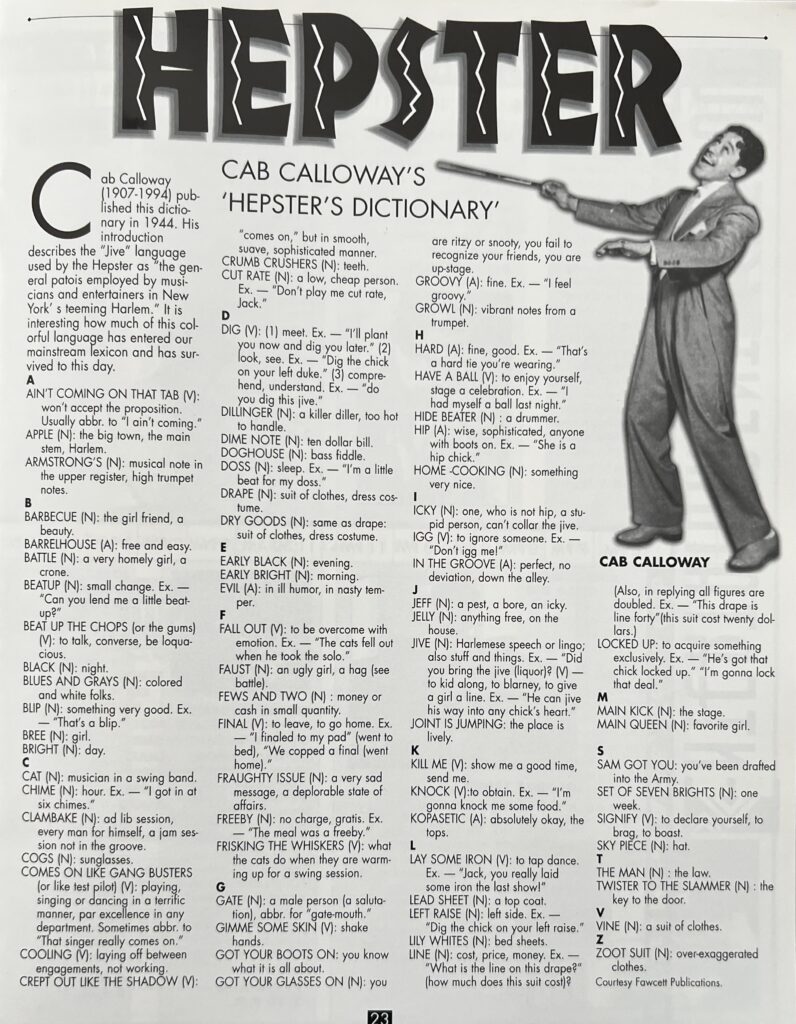
Calloway’s lexicon also took over the mainstream, bridging the gap between jazz enthusiasts and jazz performers. In 1938, he published Cab Calloway’s Cat-ologue: A “Hepster’s” Dictionary. It’s known as the first dictionary published by an African American and the official jive language reference book.
The jive language helped cement jazz culture and vocabulary into the American zeitgeist while staying true to its Harlem roots. Poet Lemn Sissay said, “Cab Calloway was taking ownership of language for a people who, just a few generations before, had their own languages taken away.”
Calloway was above all, a trailblazer for performers who came after him, who note his singularity and his impact in breaking through many of the racial tensions that dominated segregated America in the 1930s and 40s.
“No living pathfinder in American popular music or its jazz and rock ‘n’ roll capillaries is so frequently emulated yet so seldom acknowledged as Cabell ‘Cab’ Calloway,” wrote Billboard back in 1993. “He arguably did more things first and better than any other band leader of his generation.”
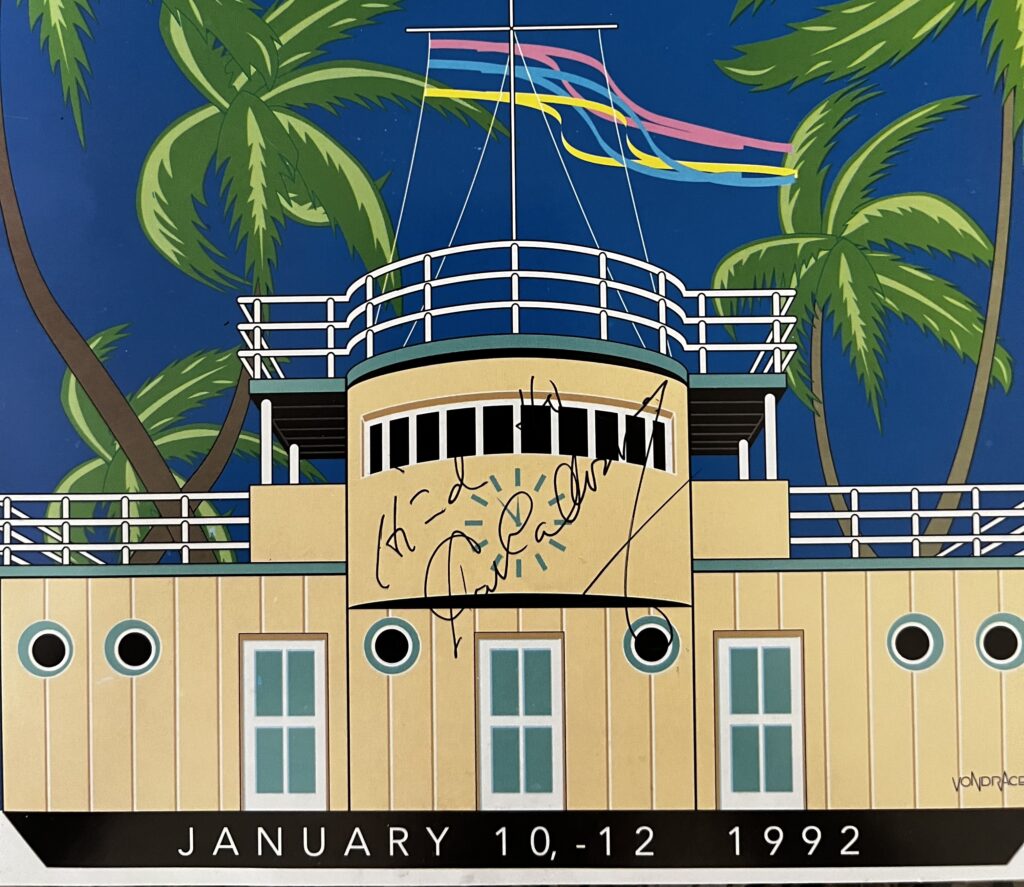
Calloway paved the way for jazz musicians and for Americans to embrace a wider conversation about our cultural heritage, from the clothes we wore to the words we spoke and music we shared – he represented a larger ongoing cultural shift that is ever present even today.
Calloway is a symbol of progress, not just of Art Deco in all its glory – but of the remnants of segregation, which were also felt in Miami with its roots as a Southern city.
The Cab Calloway Orchestra Returns to Art Deco Weekend featuring grandson C. Calloway Brooks
As we gear up for the 46th Annual Art Deco Weekend, MDPL is looking back at some of its fondest memories of hosting Calloway at the festival and our Moon Over Miami ball over the years.

Excerpt from The Orlando Sentinel, Jan 19, 1987
Michael Kinerk, MDPL chairman emeritus, vividly recalls the 15th Annual Art Deco Weekend in 1992, where Calloway performed onstage.“ We had our largest Sunday attendance ever with many thousands crowded into the park and Ocean Drive also packed with people,” said Kinerk, who also helped Calloway prep for his performance.
“He was halting and frail as he approached the outdoor stage in Lummus Park, but once on stage, he became alive, animated, and electric in a magical transformation… He was a true Art Deco superstar.”
“He was very happy to be housed in penthouse suites in Art Deco refurbished Miami Beach hotels. Once we put him at the Raleigh Hotel penthouse, which he loved.”
The iconic Cab Calloway Orchestra, now led by his grandson C. Calloway Brooks, will be performing live at Art Deco Weekend on Friday, January 13 for MDPL members and Saturday, January 14.
Brooks began playing with his grandfather as a student at the New England Conservatory of Music. He took over the reins as orchestra leader for his grandfather’s band in 1998, four years after the singer’s passing in 1994.
“I am extremely excited to be bringing the Cab Calloway Orchestra to headline the 2023 Art Deco Weekend festival in South Beach, so many decades after my late grandfather, Cab Calloway, performed at the Art Deco Weekend festival back in the 1980s and 90s,” says Brooks. “It is a great honor for me and my Orchestra to represent such a vital aesthetic, and we thank MDPL for bestowing it upon us.”
Visitors and members alike can celebrate it as an event devoted to what makes Miami Beach the heart of Art Deco. From the days of Cab Calloway to today, you won’t want to miss it.
Art Deco Weekend 2023 will take place January 13-15. Click here to view showtimes, register for events, and more.
